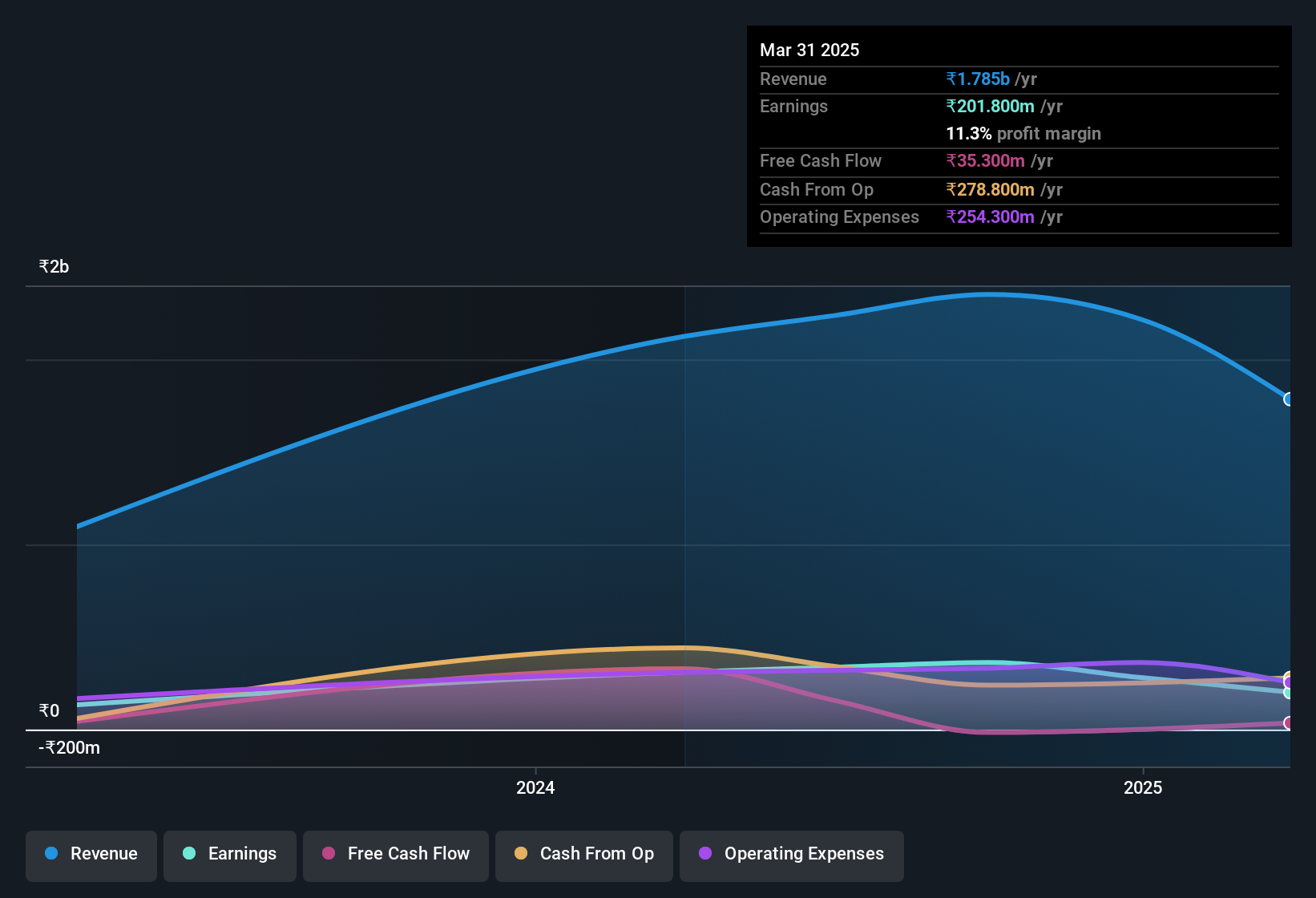- India
- /
- Energy Services
- /
- NSEI:RVTH
Revathi Equipment India's (NSE:RVTH) Shareholders Have More To Worry About Than Only Soft Earnings
A lackluster earnings announcement from Revathi Equipment India Limited (NSE:RVTH) last week didn't sink the stock price. However, we believe that investors should be aware of some underlying factors which may be of concern.

Zooming In On Revathi Equipment India's Earnings
Many investors haven't heard of the accrual ratio from cashflow, but it is actually a useful measure of how well a company's profit is backed up by free cash flow (FCF) during a given period. In plain english, this ratio subtracts FCF from net profit, and divides that number by the company's average operating assets over that period. This ratio tells us how much of a company's profit is not backed by free cashflow.
That means a negative accrual ratio is a good thing, because it shows that the company is bringing in more free cash flow than its profit would suggest. While it's not a problem to have a positive accrual ratio, indicating a certain level of non-cash profits, a high accrual ratio is arguably a bad thing, because it indicates paper profits are not matched by cash flow. To quote a 2014 paper by Lewellen and Resutek, "firms with higher accruals tend to be less profitable in the future".
Revathi Equipment India has an accrual ratio of 0.22 for the year to March 2025. Therefore, we know that it's free cashflow was significantly lower than its statutory profit, which is hardly a good thing. To wit, it produced free cash flow of ₹35m during the period, falling well short of its reported profit of ₹201.8m. Revathi Equipment India shareholders will no doubt be hoping that its free cash flow bounces back next year, since it was down over the last twelve months. The good news for shareholders is that Revathi Equipment India's accrual ratio was much better last year, so this year's poor reading might simply be a case of a short term mismatch between profit and FCF. As a result, some shareholders may be looking for stronger cash conversion in the current year.
Note: we always recommend investors check balance sheet strength. Click here to be taken to our balance sheet analysis of Revathi Equipment India.

Our Take On Revathi Equipment India's Profit Performance
Revathi Equipment India didn't convert much of its profit to free cash flow in the last year, which some investors may consider rather suboptimal. Because of this, we think that it may be that Revathi Equipment India's statutory profits are better than its underlying earnings power. Sadly, its EPS was down over the last twelve months. At the end of the day, it's essential to consider more than just the factors above, if you want to understand the company properly. If you want to do dive deeper into Revathi Equipment India, you'd also look into what risks it is currently facing. Every company has risks, and we've spotted 3 warning signs for Revathi Equipment India (of which 2 shouldn't be ignored!) you should know about.
Today we've zoomed in on a single data point to better understand the nature of Revathi Equipment India's profit. But there is always more to discover if you are capable of focussing your mind on minutiae. Some people consider a high return on equity to be a good sign of a quality business. So you may wish to see this free collection of companies boasting high return on equity, or this list of stocks with high insider ownership.
New: AI Stock Screener & Alerts
Our new AI Stock Screener scans the market every day to uncover opportunities.
• Dividend Powerhouses (3%+ Yield)
• Undervalued Small Caps with Insider Buying
• High growth Tech and AI Companies
Or build your own from over 50 metrics.
Have feedback on this article? Concerned about the content? Get in touch with us directly. Alternatively, email editorial-team (at) simplywallst.com.
This article by Simply Wall St is general in nature. We provide commentary based on historical data and analyst forecasts only using an unbiased methodology and our articles are not intended to be financial advice. It does not constitute a recommendation to buy or sell any stock, and does not take account of your objectives, or your financial situation. We aim to bring you long-term focused analysis driven by fundamental data. Note that our analysis may not factor in the latest price-sensitive company announcements or qualitative material. Simply Wall St has no position in any stocks mentioned.
About NSEI:RVTH
Revathi Equipment India
Engages in manufacturing and marketing of drill equipment in India and internationally.
Excellent balance sheet with slight risk.
Market Insights
Community Narratives



